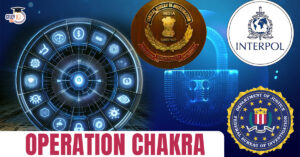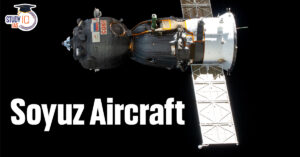Table of Contents
PM Surya Ghar – Muft Bijli Yojna
Context: The Ministry of New and Renewable Energy (MNRE) has introduced a ₹500-crore fund for Innovative Projects under PM Surya Ghar: Muft Bijli Yojana. This initiative aims to support advancements like blockchain-based peer-to-peer RTS [Rooftop Solar], digital solutions for RTS, smart building materials etc.
About PM Surya Ghar Yojna
- Launched: February 15, 2024
- Objective: To provide free electricity to one crore households by facilitating the installation of rooftop solar electricity systems.
- Nodal Ministry: The Ministry of New and Renewable Energy (MNRE)
- Implementation Agency: Rural Electrification Corporation (REC)
- Key Features of the Scheme
- Free Electricity Provision: Eligible households will receive up to 300 units of electricity free every month.
- Subsidy: The scheme offers a subsidy of up to 60% of the cost of solar panels for systems up to 2 kW capacity, and 40% for systems between 2 to 3 kW capacity. The subsidy is capped at 3 kW capacity
- Model Solar Villages: The scheme aims to create one model solar village in each district of India to promote solar energy adoption.
- Incentives for Urban Local Bodies and Panchayati Raj Institutions: These institutions will receive incentives to promote rooftop solar installations in their areas.
A New White Revolution
Context: Recently the Union Cooperation Minister has launched the standard operating procedure for ‘White Revolution 2.0’. According to the Ministry White Revolution 2.0 will “increase milk procurement of dairy cooperatives by 50% over the next five years.
About White Revolution 2.0
- Aim: To increase procurement led by cooperatives from present 660 lakh litres per day to 1,000 lakh litres.
- Funding:
- Majority of funding will come from National Programme for Dairy Development (NPDD) 2.0, a new Central Sector scheme.
- It will provide Rs 40,000 per M-PACS (Multi-Purpose Primary Agricultural Societies) to 1,000 M-PACS for setting up village-level milk procurement systems, chilling facilities etc.
- Key Features:
- It will empower women in the dairy sector and strengthen women’s cooperatives.
- Raise procurement by 50% over the next five years.
- 100,000 new and existing cooperative societies (district cooperative societies and Primary Agricultural Credit Societies) will be set up or enhanced.
- Nationwide rollout for dairy farmers, with micro-ATMs at cooperative societies.
- Approximately 67,930 PACS will be computerised to enhance operational efficiency and management.
| Facts |
|
How Starlink Satellites Binding Astronomers
Context: A study published in the journal Astronomy & Astrophysics found Starlink satellites are impeding the work of astronomers.
How?
- The Starlink “constellation”, which consists of more than 6,300 satellites orbiting at an altitude of around 550 km, is primarily used to provide high-speed internet to remote areas.
- However, these satellites generate radio noise or unintended electromagnetic radiation (UEMR), disrupting astronomical observations.
|
What is Radio Astronomy? |
|
- Just like bright light can blind the human eye, radio noise can overwhelm radio telescopes, impeding their ability to detect faint signals.
Studies And Findings
- Cees Bassa, lead author of the study from the Netherlands Institute for Radio Astronomy (ASTRON), stated that this interference is like trying to see the faintest star next to the brightness of a full moon.
- The study found that Starlink’s second-generation satellites emit 32 times more UEMR compared to the first-generation satellites.
- Starlink’s first-generation satellites, which make up the majority of the network, have already drawn criticism from the astronomy community when their UEMR was first discovered to be interfering with research in 2022.
- Benjamin Winkel from the Max Planck Institute for Radio Astronomy contributed to the study and noted that the interference is so severe that it is effectively “blinding” scientists’ radio telescopes, saturating them with excess radio noise.
Guidelines provided by Supreme Court in Arnesh Kumar Case
Context: Recently a car accident accused in Gurgaon was granted bail on the basis of Supreme Court directions in the Arnesh Kumar vs State of Bihar case.
What were the Guidelines ?
The court established guidelines (known as the Arnesh Kumar Guidelines) to prevent arbitrary arrests:
- Instructions for State Governments:
- State governments must direct police officers to exercise caution when making arrests under Section 498-A IPC.
- Officers should not automatically arrest individuals based solely on the registration of a complaint.
- Instead, they must carefully assess the necessity for arrest based on the criteria outlined in Section 41 of the Criminal Procedure Code (CrPC
- Checklist for Police Officers
- While making arrests, police officers must use a comprehensive checklist with specified sub-clauses under Section 41(1)(b)(ii) of the CrPC.
- This checklist serves as a guide for officers to evaluate the necessity and justification for an arrest.
- Reporting Arrest Reasons
- Police officers must forward the filled checklist and detailed reasons for the arrest to the Magistrate when presenting the accused for further detention.
- Magistrate’s Role:
- Before approving continued detention, Magistrates must carefully review the police report and checklist, ensuring they are satisfied with the provided reasons for the arrest.
- Decision Not to Arrest:
- If a police officer decides not to make an arrest, the decision must be reported to the Magistrate within two weeks of the case’s institution. The district’s Superintendent of Police can extend this timeline with written reasons.
- Notice of Appearance:
- Within two weeks of the case’s institution, a notice of appearance under Section 41-A CrPC must be served on the accused. The Superintendent of Police can extend this timeline with written reasons.
- Compliance and Penalties:
- Magistrates who authorise detention without recording proper reasons will face departmental action by the appropriate High Court.
Bombay HC strikes down amended IT rules
Context: The Bombay High Court has struck down a key provision of the amended Information Technology (IT) Rules 2021 (under IT Act of 2000) related to establishment of Fact Check Unit as unconstitutional.
About IT Amendment rules 2023
The Information Technology (Intermediary Guidelines and Digital Media Ethics Code) Amendment Rules, 2023 (IT Amendment Rules, 2023) were notified on April 6, 2023 by the Ministry of Electronics and Information Technology (MeitY).
The rules include several amendments to the IT Rules, 2021, including:
- Fact-checking unit
- The rules establish a fact-checking unit to identify online information that is “fake,” “false,” or “misleading” and related to the Union government.
- The unit can then decide on the online presence of such information.
- If any piece of information is marked as fake by the upcoming fact check unit, online intermediaries will be required to take it down. Internet service providers will have to block URLs of such content.
|
Fact |
| On March 21, 2024, the Supreme Court stayed the Union’s notification to establish the fact-checking unit. |
- Online gaming
- The rules require online gaming to be registered, verified, and transparent about user agreements and privacy policies.
- They also ensure that online gaming intermediaries are accountable for their ethical conduct and content.
- Safe harbour protection
- If intermediaries fail to remove flagged information, they may lose their safe harbour protection under Section 79 of the IT Act.
- Grievance appellate committee
- The rules add a grievance appellate committee to hear appeals against the decisions of grievance officers.
Reasons for striking down IT Rules
- Violation of Fundamental Rights:
- The amended IT Rules 2023 violated
- Articles 14 (right to equality)
- Article 19 (freedom of speech and expression)
- Article 19(1)(g) (right to practise a profession) of the Constitution.
- Vague Definitions
- The terms “fake, false, and misleading” were seen as unclear because they lacked specific definitions.
- This vagueness could lead to misuse and create a chilling effect on how intermediaries operate.
- Risk of Arbitrary Censorship
- The ruling pointed out that the unclear rules could allow the government to censor information arbitrarily, which would go against democratic principles.
- The amended IT Rules 2023 violated


 Places in News for UPSC 2025 for Prelims...
Places in News for UPSC 2025 for Prelims...
 New Phase of Operation Chakra to Combat ...
New Phase of Operation Chakra to Combat ...
 Soyuz Aircraft: History, Design and Sign...
Soyuz Aircraft: History, Design and Sign...





















